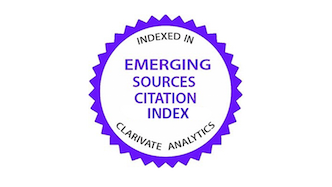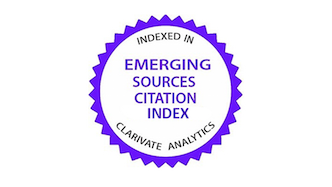Isolation of rumen cellulolytic bacterial consortia and in vitro simulation of rumen microbiota manipulation
DOI:
https://doi.org/10.15517/am.2025.62973Keywords:
biogas, degradation, enzyme activity, gas production, rumenAbstract
Introduction. The isolation and manipulation of rumen cellulolytic bacterial consortia (CBC) enhance fiber degradation under in vitro conditions. Objective. To obtain CBC from different substrates and simulate ruminal microbiota (RM) manipulation through in vitro gas production test. Materials and methods. The study was conducted from January to June 2024 at the Autonomous University of Guerrero, Cuajinicuilapa, Guerrero, Mexico. CBC were
obtained from rumen fluid using selective culture media with three distinct substrates: ground sawdust (CBCa),
Mulatto grass stalk (CBCt), and ground Mulatto grass (CBCm). Two in vitro assays were performed: a) evaluation of the CBC obtained, and b) addition of the CBC to RM. Both assays measured partial biogas production at intervals 0 to 24 h, 24 to 48 h, and 48 to 72 h, and cumulative production. Dry matter degradation (DMD) and cellulolytic enzyme activity (CEA) were assessed at 24, 48, and 72 h. Variables were analyzed in a completely randomized design. Results. In trial 1, CBCa demonstrated superior cumulative biogas production (p < 0.05); DMD at 24 and 72 h was higher for CBCa (p < 0.05); DMD at 48 h and CEA showed no significant differences among CBC (p > 0.05). In trial 2, the addition of CBC to RM did not significantly alter partial biogas production, DMD at 24, 48, and 72 h, nor CEA at 24 and 48 h (p > 0.05). However, the addition of CBCm increased 13.8 and 36.3 % the cumulative biogas production and CEA at 72 h, respectively. Conclusion. CBC obtained from Mulatto grass demonstrated potential for
RM manipulation under the specific in vitro conditions of this study.
References
Amanzougarene, Z., & Fondevila, M. (2020). Fitting of the in vitro gas production technique to the study of high concentrate diets. Animals, 10(10), Article 1935. https://doi.org/10.3390/ani10101935
Association of Analytical Chemists (AOAC). (2016). Official methods of analysis (20th ed.). AOAC International.
Azhar, S., Aihetasham, A., Chaudhary, A., Hussain, Z., Abdul Rehman, R., Abbas, G., Alharbi, S. A., Ansari, M. J., & Qamer, S. (2024). Cellulolytic and ethanologenic evaluation of Heterotermes indicola’s gut-associated bacterial isolates. ACS Omega, 9(10), 12084–12100. https://doi.org/10.1021/acsomega.3c10030
Basak, B., Kumar, R., Tanpure, R. S., Mishra, A., Tripathy, S. K., Chakrabortty, S., Roh, H.-S., Yadav, K. K., Chung, W., & Jeon, B.-H. (2025). Roles of engineered lignocellulolytic microbiota in bioaugmenting lignocellulose biomethanation. Renewable and Sustainable Energy Reviews, 207, Article 114913. https://doi.org/10.1016/j.rser.2024.114913
Carhuapoma-Delacruz, V., Auqui-Acharte, G. S., Valencia-Mamani, N., Gonzales-Huamán, T. J., Guillen-Domínguez, H. M., & Esparza, M. (2022). Bacterias fibrolíticas aisladas de rumen de alpaca, ovino y vacuno con capacidad biodegradadora de celulosa. Revista Científica de la Facultad de Ciencias Veterinarias de la Universidad del Zulia, 32, 1-7. https://doi.org/10.52973/rcfcv-e32094
Culp, E. J., & Goodman, A. L. (2023). Cross-feeding in the gut microbiome: ecology and mechanisms. Cell Host & Microbe, 31(4), 485–499. https://doi.org/10.1016/j.chom.2023.03.016
Darwin, Barnes, A., & Cord-Ruwisch, R. (2018). In vitro rumen fermentation of soluble and non-soluble polymeric carbohydrates in relation to ruminal acidosis. Annals of Microbiology, 68(1), 1–8.
Di Rienzo, J. A., Casanoves, F., Balzarini, M. G., González, L., Tablada, M., & Robledo, C. W. (2020). Infostat (Versión 2020) [software]. Centro de Transferencia InfoStat. https://www.infostat.com.ar/index.php?mod=page&id=15
Duncker, K. E., Holmes, Z. A., & You, L. (2021). Engineered microbial consortia: strategies and applications. Microbial Cell Factories, 20(1), Article 211. https://doi.org/10.1186/s12934-021-01699-9
Gharechahi, J., Vahidi, M. F., Sharifi, G., Ariaeenejad, S., Ding, X.-Z., Han, J.-L., & Salekdeh, G. H. (2023). Lignocellulose degradation by rumen bacterial communities: new insights from metagenome analyses. Environmental Research, 229, Article 115925. https://doi.org/10.1016/j.envres.2023.115925
Hernández-Morales, J., Sánchez-Santillán, P., Torres-Salado, N., Herrera-Pérez, J., Rojas-García, A. R., Reyes-Vázquez, I., & Mendoza-Núñez, M. A. (2018). Composición química y degradaciones in vitro de vainas y hojas de leguminosas arbóreas del trópico seco de México. Revista Mexicana de Ciencias Pecuarias, 9(1), 105–120. https://doi.org/10.22319/rmcp.v9i1.4332
Hernández-Sánchez, D., Herrera-Pérez, J., López Garrido, S. J., Torres-Salado, N., & Sánchez-Santillán, P. (2022). Producción de biogás y características fermentativas in vitro de consorcios bacterianos celulolíticos ruminales obtenidos de diferentes fibras. Tropical and Subtropical Agroecosystems, 25(3), Artículo 107. https://doi.org/10.56369/tsaes.4127
Isnawati, I., Lisdiana, L., Asri, M. T., & Trimulyono, G. (2024). Biodiversity of cellulolytic bacteria isolated from fermetodege for ruminants. Biotropia, 31(2), Article 2. https://doi.org/10.11598/btb.2024.31.2.1904
Kumar, R., Kumar Vatsa, D., Singh, G., & Baghla, K. (2024). Effect of biological pre-treatment of agricultural waste on biogas production. International Journal of Current Microbiology and Applied Sciences, 12(8), 68–73. https://doi.org/10.20546/ijcmas.2023.1208.008.
Liang, J., Zhang, R., Chang, J., Chen, L., Nabi, M., Zhang, H., Zhang, G., & Zhang, P. (2024). Rumen microbes, enzymes, metabolisms, and application in lignocellulosic waste conversion - A comprehensive review. Biotechnology Advances, 71, Article 108308. https://doi.org/10.1016/j.biotechadv.2024.108308
Miller, G. L. (1959). Use of dinitrosalicylic acid reagent for determination of reducing sugar. Analytical Chemistry, 31(3), 426–428. https://doi.org/10.1021/ac60147a030
Palmonari, A., Federiconi, A., & Formigoni, A. (2024). Animal board invited review: the effect of diet on rumen microbial composition in dairy cows. Animal, 18(10), Article 101319. https://doi.org/10.1016/j.animal.2024.101319
Sánchez-Santillán, P., Herrera-Pérez, J., Torres-Salado, N., Almaraz-Buendía, I., Reyes-Vázquez, I., Rojas-García, A. R., Gómez-Trinidad, M., Contreras-Ramírez, E. O., Maldonado-Peralta, M. de los Á., & Magadan-Olmedo, F. (2020). Chemical composition, and in vitro fermentation of ripe mango silage with molasses. Agroforestry Systems, 94(4), 1511-1519. https://doi.org/10.1007/s10457-019-00442-z
Sánchez-Santillán, P., Meneses-Mayo, M., Miranda-Romero, L., Santellano-Estrada, E., & Alarcón-Zúñiga, B. (2015). Fribrinolytic activity and gas production by Pleurotus ostreatus-IE8 and Fomes fomentarius - EUM1 in bagasse cane. Revista MVZ Córdoba, 20(Supl.), 4907-4916. https://doi.org/10.21897/rmvz.6
Srivastava, S., & Dafale, N. A. (2024). Tailored microbial consortium producing hydrolytic enzyme cocktail for maximum saccharification of wheat straw. Bioresource Technology, 399, Article 130560. https://doi.org/10.1016/j.biortech.2024.130560
Takors, R., Kopf, M., Mampel, J., Bluemke, W., Blombach, B., Eikmanns, B., Bengelsdorf, F. R., Weuster‐Botz, D., & Dürre, P. (2018). Using gas mixtures of CO, CO2 and H2 as microbial substrates: the do’s and don’ts of successful technology transfer from laboratory to production scale. Microbial Biotechnology, 11(4), 606-625. https://doi.org/10.1111/1751-7915.13270
Texta Nogueda, J., Sánchez-Santillán, P., Hernández Sánchez, D., Torres Salado, N., Crosby Galvan, M., Herrera Pérez, J., & Rojas-García, R. A. (2019). Uso de disacáridos y carbón activado para preservar consorcios de bacterias ruminales celulolíticas liofilizadas. Revista MVZ Córdoba, 24(3), 7305-7313. https://doi.org/10.21897/rmvz.1412
Torres-Salado, N., Sánchez-Santillán, P., Rojas-García, R. A., Almaraz-Buendía, I., Herrera-Pérez, J., Reyes-Vázquez, I., & Mayren-Mendoza, F. J. (2019). In vitro gas production and fermentative characteristics of ruminal cellulolytic bacterial consortia of water buffalo (Bubalus bubalis) and Suiz-bu cow. Agrociencia, 53(2), 145-159.
Van Soest, P. J., Robertson, J. B., & Lewis, B. A. (1991). Methods for dietary fiber, neutral detergent fiber, and nonstarch polysaccharides in relation to animal nutrition. Journal of Dairy Science, 74(10), 3583-3597. https://doi.org/10.3168/jds.S0022-0302(91)78551-2
Zhang, S., Merino, N., Okamoto, A., & Gedalanga, P. (2018). Interkingdom microbial consortia mechanisms to guide biotechnological applications. Microbial Biotechnology, 11(5), 833-847. https://doi.org/10.1111/1751-7915.13300

Additional Files
Published
License

This work is licensed under a Creative Commons Attribution-NonCommercial-NoDerivatives 4.0 International License.
1. Proposed policy for open access journals
Authors who publish in this journal accept the following conditions:
a. Authors retain the copyright and assign to the journal the right to the first publication, with the work registered under the attribution, non-commercial and no-derivative license from Creative Commons, which allows third parties to use what has been published as long as they mention the authorship of the work and upon first publication in this journal, the work may not be used for commercial purposes and the publications may not be used to remix, transform or create another work.
b. Authors may enter into additional independent contractual arrangements for the non-exclusive distribution of the version of the article published in this journal (e.g., including it in an institutional repository or publishing it in a book) provided that they clearly indicate that the work was first published in this journal.
c. Authors are permitted and encouraged to publish their work on the Internet (e.g. on institutional or personal pages) before and during the review and publication process, as it may lead to productive exchanges and faster and wider dissemination of published work (see The Effect of Open Access).






























